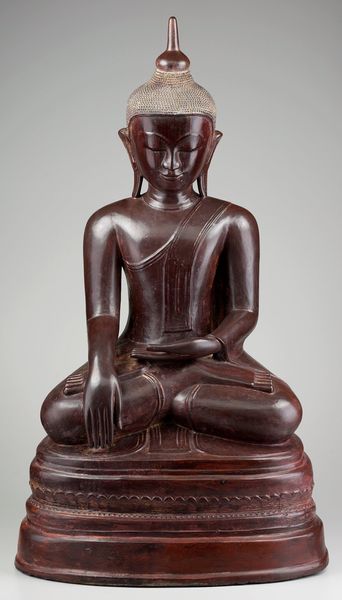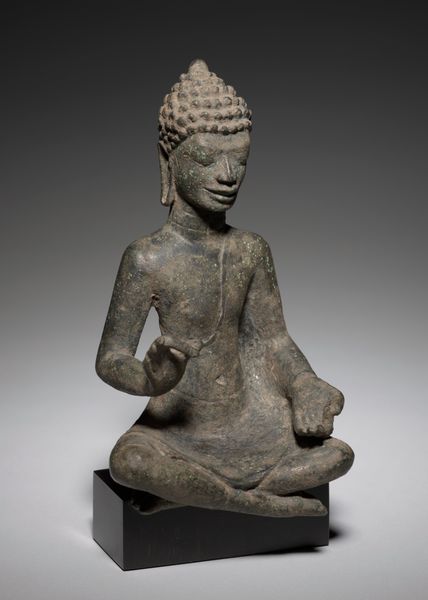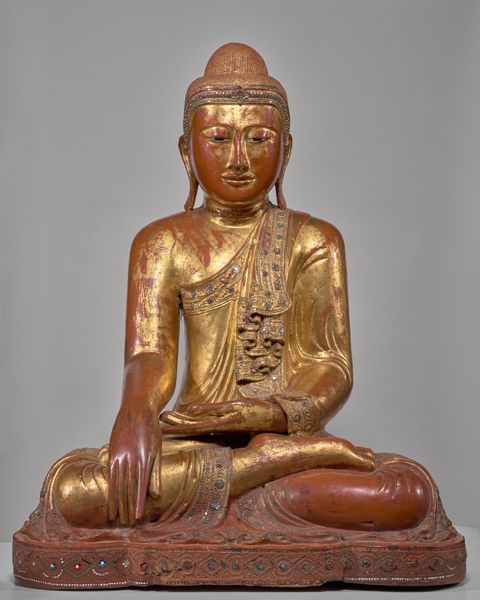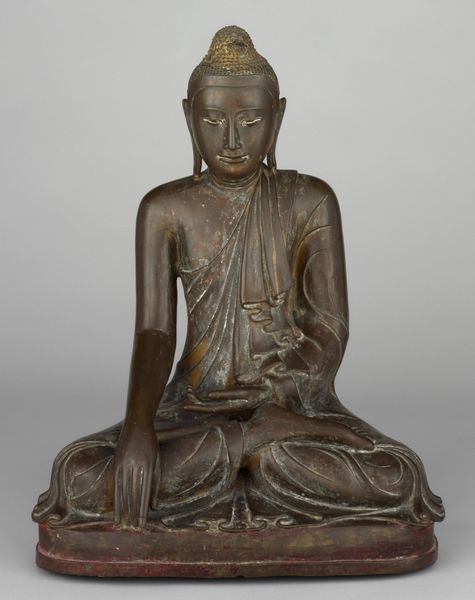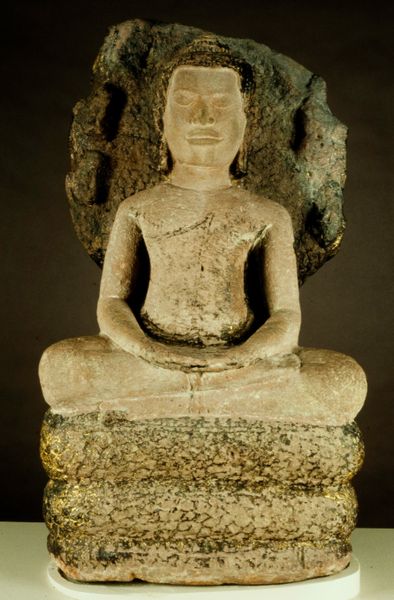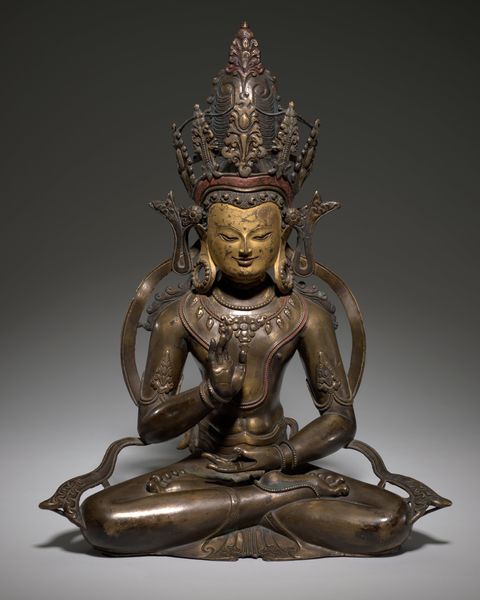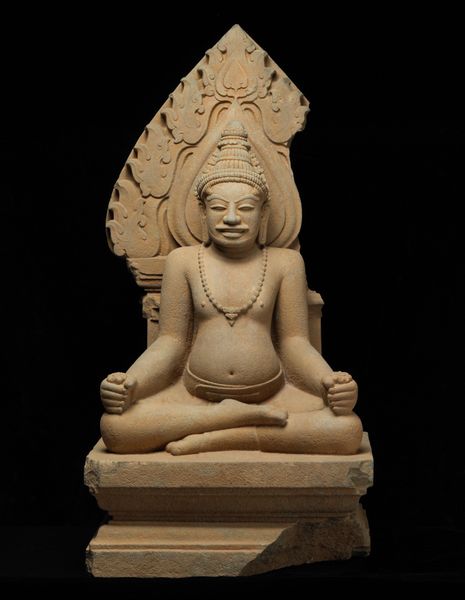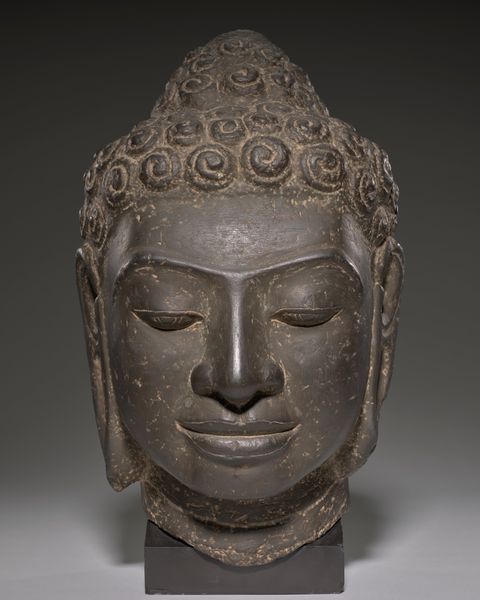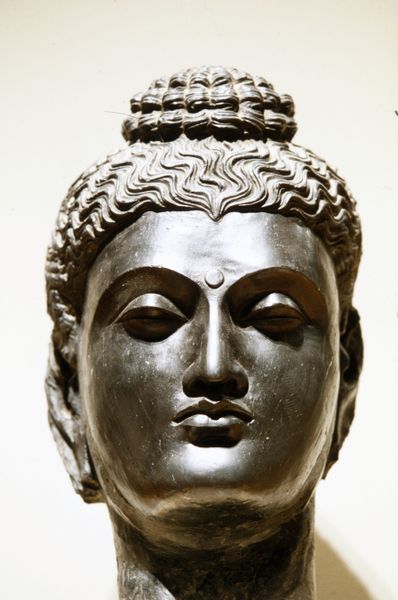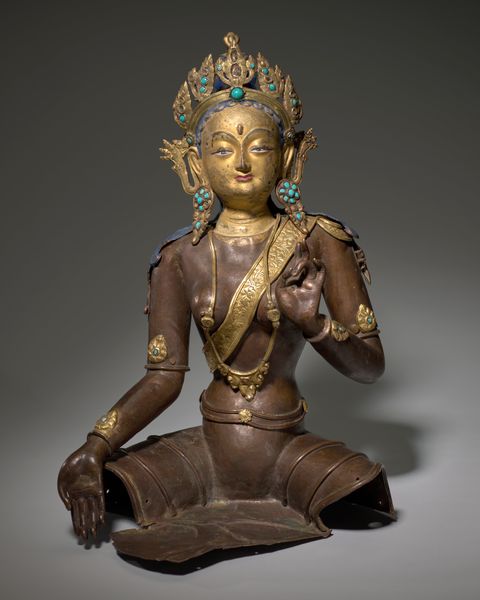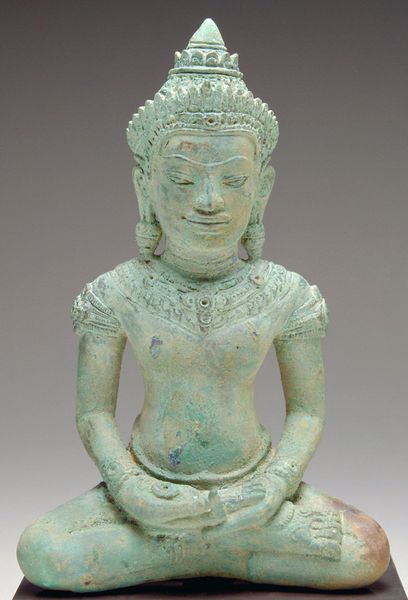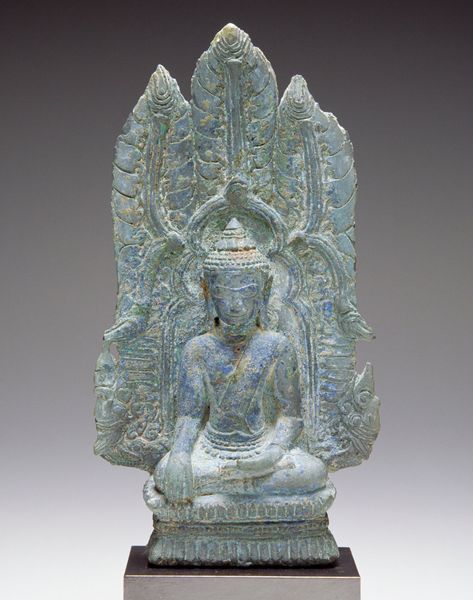
bronze, sculpture, enamel
#
portrait
#
stone
#
sculpture
#
asian-art
#
bronze
#
figuration
#
sculpture
#
enamel
Copyright: Public Domain
Curator: Before us stands "Buddha Subduing Mara," a bronze sculpture with enamel details, likely dating from the 15th century. It resides here at the Minneapolis Institute of Art. Editor: The weathered patina and serene expression immediately evoke a sense of timelessness. The subtle green tones feel particularly calming, lending an almost meditative aura to the piece. Curator: It's a remarkable example of bronze casting from that era. Observe how the artist utilizes the lost-wax process to achieve such intricate detailing in the Buddha's hair, the subtle folds of his robe, and even the lotus petals adorning the base. Semiotically, these design elements signal significant iconographic meanings. Editor: Absolutely. The lotus base, of course, speaks to purity and spiritual awakening. More broadly, the widespread prevalence of this image suggests how art became a method through which Buddhism spread in Asia. Also, the positioning of the hands, the bhumisparsha mudra... Curator: ...Indeed, earth-touching gesture, calling the earth to witness his enlightenment and triumph over Mara, the demon of illusion. In effect, this single gesture condenses a powerful narrative of spiritual victory, made palpable through bronze and enamel. Note, too, the deliberate geometric shapes formed between arms and legs; lines of tremendous composure, like musical notation rendered materially. Editor: Yet its impact stems, I think, not only from technical skill but also from how these features reinforced the power of specific Buddhist institutions. How the image played within networks of monasteries or royal patronage would undoubtedly affect interpretations of this work by a public, by patrons, and those aspiring towards enlightenment. Curator: That intersection of artistic vision and societal function is definitely fascinating, reminding us how artistic creation has always occurred within social contexts. What truly captures me, however, is how a relatively fixed array of compositional strategies and representational codes creates an undeniably compelling aura of presence. It serves as a striking testament to artistic ingenuity within form itself. Editor: It reminds us that context shapes perception and perhaps inspires a sense of empathy towards these objects. Thinking of these images embedded in historical milieus might enrich how the Minneapolis community and diverse diasporas approach art. Curator: I'll never see this figure the same again; thanks for enriching my view of this excellent representation of form. Editor: Likewise. By seeing through new eyes, we ensure ongoing discussions around these images in contemporary settings.
Comments
minneapolisinstituteofart almost 2 years ago
⋮
This sculpture captures the moment of the Buddha’s enlightenment: the defeat of Mara, lord of the realm of desire and cause of human suffering. In a gesture called bhumisparsamudra, his right hand gently calls the earth to witness the momentous occasion. Thai sculptors often forgo the narrative details of the event; instead, they economically convey its essence. The Buddha’s downcast eyes indicate deep meditation, a “lion-like” body resists the armies of temptation, and the face, now free from suffering, radiates bliss. Likely created in central Thailand, the sculpture demonstrates how Thai artists frequently fused regional tastes. Its lotus-cushion throne and broad shoulders reflect developments in the northern Thai kingdom of Lan Na (1200–1700), while the oval head, U-incised chin, heart-shaped hairline, and tubular limbs reflect developments in the southern Sukothai Kingdom (1238–1438).
Join the conversation
Join millions of artists and users on Artera today and experience the ultimate creative platform.

